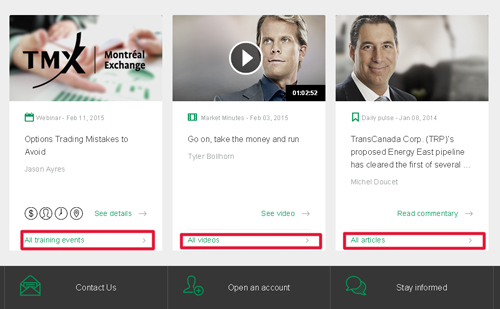If there’s one thing that can take a Canadian discount brokerage from obscurity to contender, it’s dramatically lowering its standard commission pricing. Despite a relatively quiet summer, the lead up to the fall of 2015 has now officially been marked with a price drop from an unlikely source: HSBC InvestDirect.
As of early September, HSBC InvestDirect has dramatically lowered and simplified their standard equity commission pricing from $28.88+ per trade down to $9.88. In addition, standard options commission pricing has also dropped from a base of $35+ per trade to the standard $9.88 fee + $1.25 per contract. To clarify, the new commission pricing applies to North American equities/ETFs and options only (HSBC InvestDirect is one of a few Canadian online brokerages that has global market trading capability).
While the most drastic pricing adjustments are for the standard offerings, HSBC InvestDirect Advanced clients (i.e. clients with at least $50,000 in assets or who execute 30+ trades per quarter) also caught a break. Their commission price dropped from $9.88 per trade down to $8.88 a trade.
Prior to this move, HSBC InvestDirect and Scotia iTrade were the two remaining bank-owned brokerages that had yet to lower their standard commission pricing down to the sub-$10 range. Unfortunately for Scotia iTrade, it’s now the sole major Canadian bank-owned discount brokerage that charges more double the going rate of about $10 ($24.99+ to be exact) for a standard commission on an equity trade.
The chart below illustrates just how drastic a difference there is between standard commission pricing at Scotia iTrade and the rest of bank-owned online brokerages. Also noticeable is the fact that HSBC InvestDirect’s new commission pricing edges out a lot of its peers.

For those watching the cost per trade closely, HSBC InvestDirect’s new $9.88 commission pricing is actually lower than the standard commission pricing of most of the bank-owned brokerages except for CIBC Investor’s Edge who still offers standard commission pricing at $6.95 per trade. For clients of the HSBC InvestDirect Advanced tier, however, the $8.88 pricing offers a significant savings per trade when compared to what other bank-owned brokerages are offering for deposit/assets of $50,000.
Over the past year HSBC InvestDirect has become increasingly more active with updates to their website content, and with a few promotional offers, the most recent ending just ahead of the announcement of the new pricing. Prior to the past year or so, HSBC InvestDirect appeared to be in somewhat of a holding pattern, not really producing many new deals or promotions nor shifting their pricing alongside the major online brokerage players. Perhaps this move will serve as a catalyst for more activity in the coming months.
It was interesting to note that there was no promotional offer that coincided with the launch of the new pricing. Given the ramp up to the busy fall season, however, HSBC InvestDirect may already have something in the works to take advantage of the attention they’re bound to get from this new pricing initiative.
Whatever HSBC InvestDirect’s strategy is at this point, it’s clear that having standard commission pricing that is lower than most of the other bank-owned brokerages will make waves with the bigger players in the pool. The trick, as almost all other brokerages know, is keeping investors’ attention, which is not something price alone can do.




 *Edited Dec. 22/14* What an exciting year to be a DIY investor. As an active observer and commentator on the landscape of Canada’s online brokerages, we’ve seen some dramatic changes this past year. Whether it was reduction in commission pricing, changes in account types or enhancements to platforms, user experience or investor education, 2014 presented no shortage of exciting developments.
*Edited Dec. 22/14* What an exciting year to be a DIY investor. As an active observer and commentator on the landscape of Canada’s online brokerages, we’ve seen some dramatic changes this past year. Whether it was reduction in commission pricing, changes in account types or enhancements to platforms, user experience or investor education, 2014 presented no shortage of exciting developments.







 For many who wade into the waters of DIY investing, those first few steps begin in shallow waters. With no lifeguard on duty and countless warnings of sharks and other dangers, those first steps can be nerve wracking. And yet, despite the nerves, and the warnings, the promise of fortunes and financial freedom continue to lure investors into the deep waters of DIY investing.
For many who wade into the waters of DIY investing, those first few steps begin in shallow waters. With no lifeguard on duty and countless warnings of sharks and other dangers, those first steps can be nerve wracking. And yet, despite the nerves, and the warnings, the promise of fortunes and financial freedom continue to lure investors into the deep waters of DIY investing.


 Earlier last week the
Earlier last week the 